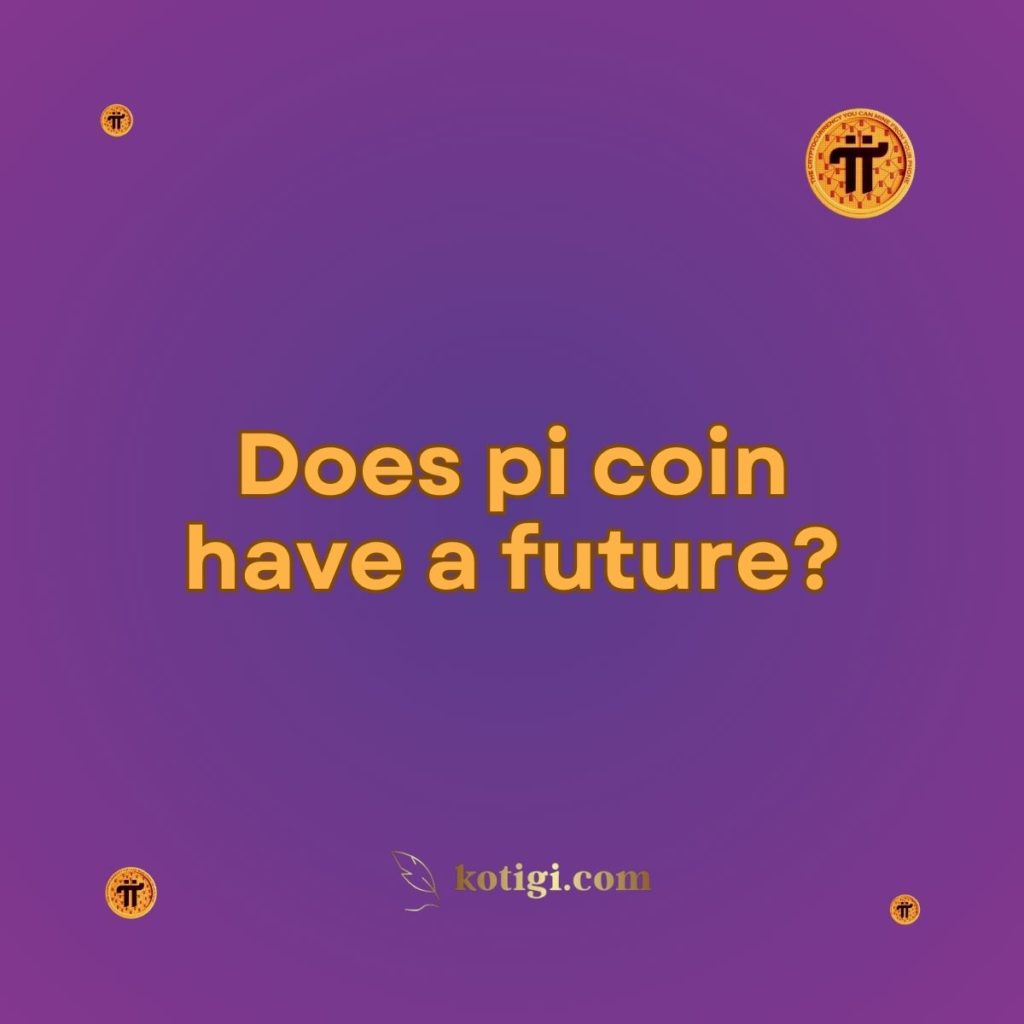
Does pi coin have a future?
Yes, Pi coin has the potential for a future, but it largely depends on its successful transition to the open mainnet, wider adoption, and real-world use cases. The Pi Network team is actively working on KYC verification, network security, and scaling to prepare for the coin’s public launch. Once Pi is tradable and gains more utility, it could have a significant role in the crypto space.
Introduction
Pi Network has garnered attention with its unique approach to mobile mining and community-based development. As the network approaches its transition to the open mainnet, many are asking: Does Pi coin have a future? While Pi has yet to be publicly traded, its potential depends on several factors, including the development team’s progress, market adoption, and practical use cases. In this article, we’ll explore Pi’s future prospects, including its current status, potential challenges, and what might contribute to its success.
Current Status of Pi Network
Enclosed Mainnet Phase
At present, Pi is in its enclosed mainnet phase. This stage allows users who have passed KYC (Know Your Customer) to hold, trade, and use Pi within the ecosystem. However, external transactions with Pi (like selling on exchanges or converting to fiat currencies) are not possible yet.
The enclosed mainnet is a critical step for the network, providing a testing ground for decentralized applications (dApps), marketplace activities, and transaction functionalities within the Pi ecosystem.
KYC Verification and its Importance
One major milestone for Pi is ensuring a large portion of its users complete KYC. This process verifies the identity of users to ensure that Pi coins are held by real people rather than bots or multiple fake accounts. As of now, only users who pass KYC will be able to transfer and trade Pi once the open mainnet launches. The completion of this verification process will heavily impact the network’s readiness to move forward.
The Road to Open Mainnet
The open mainnet launch is a highly anticipated event for Pi users, as it marks the transition from a closed ecosystem to a fully tradable and decentralized cryptocurrency. Once the open mainnet is live, Pi will be listed on exchanges, allowing users to buy, sell, and trade Pi coins publicly.
The timing of the open mainnet depends on several factors, including:
- Completion of KYC for a majority of users
- Ensuring network security and scalability
- Development of dApps and other use cases for Pi
Once these are accomplished, Pi could enter the open market, creating an opportunity for broader adoption and a clearer picture of Pi’s future value.
Challenges Pi Coin Faces
Market Competition
Pi coin will face stiff competition from thousands of existing cryptocurrencies, many of which have already established themselves in the market. Cryptocurrencies like Bitcoin, Ethereum, and newer entrants like Solana and Polkadot have carved out specific niches in the blockchain space. Pi Network must differentiate itself by offering unique value propositions, such as ease of mining, scalability, or real-world utility, to remain competitive.
Skepticism from the Crypto Community
As Pi is still in its development phase, some skepticism exists within the broader crypto community. Critics argue that Pi has not yet proven its utility or sustainability in the long term. The lack of a real market price also makes it challenging for investors to assess its true value. Overcoming these doubts will be crucial for Pi’s future success.
Factors That Could Shape Pi’s Future
Real-World Use Cases
One of the most critical factors determining Pi’s future will be its utility. For Pi to succeed, it must go beyond being a mined coin and become something that people can use in everyday transactions or within decentralized applications.
The Pi Network team has highlighted several potential use cases, including:
- Decentralized Apps (dApps): Users and developers can build dApps on the Pi blockchain, offering services and products that can be paid for using Pi coins.
- Marketplace Integration: Pi could be used as a currency for goods and services in online marketplaces, allowing users to buy and sell items using Pi directly.
- Microtransactions: Pi’s low mining barrier could make it ideal for microtransactions or tipping within social networks, gaming, or content platforms.
Global Adoption
For Pi to have a long-term future, it needs widespread adoption. The project has already attracted millions of users worldwide, many of whom are mining Pi daily. However, for Pi to be considered a serious cryptocurrency, it will need to see increased adoption by businesses, merchants, and developers.
Partnerships with major companies, online marketplaces, or even governmental bodies would help cement Pi’s position in the global cryptocurrency ecosystem. Additionally, listing on reputable exchanges after the open mainnet will increase its accessibility to potential buyers and investors.
Open Mainnet and Exchange Listings
As mentioned earlier, Pi Network’s success is tied to the launch of its open mainnet. When this occurs, Pi will be listed on exchanges, allowing users to trade it freely for fiat currencies or other cryptocurrencies. The open mainnet launch will also likely be the point at which Pi’s real market value is determined, based on supply and demand.
Once Pi is tradable on public exchanges, its price will fluctuate based on market forces. The initial value will depend on several factors, including how many users have Pi, what they plan to do with it, and whether businesses or dApps are integrating Pi into their platforms.
What Do Experts Say About Pi’s Future?
Supporters’ Optimism
Many early adopters and supporters of Pi Network are optimistic about its future. They believe that Pi’s mobile mining model lowers the entry barrier for people to get involved in cryptocurrency, making it accessible to millions. Supporters also point to the potential for Pi to be used in decentralized finance (DeFi) applications, microtransactions, and even cross-border payments.
Critics’ Concerns
On the other hand, critics highlight Pi’s current lack of public market value as a concern. Without a clear price and tangible utility beyond mining, some wonder whether Pi will be able to compete with established cryptocurrencies. Additionally, the long timeline for the open mainnet launch has caused some impatience within the community.
Despite these concerns, Pi continues to develop, and the team remains committed to its vision.
Future Price Predictions for Pi
Given that Pi is not yet publicly tradable, its future price remains speculative. Some predict that Pi’s value could start relatively low, given its high supply, but rise as more people join the network and it gains utility. Others believe that Pi’s innovative mobile mining model could attract new users and developers, leading to higher demand and, therefore, a higher price.
However, until the open mainnet is launched and Pi becomes available on exchanges, any predictions remain speculative.
Conclusion
While Pi coin has not yet reached its full potential, it has laid a foundation that could lead to future success. With millions of users, a clear plan for KYC verification, and a pathway toward the open mainnet, Pi has the infrastructure needed to grow. Its future, however, depends on several key factors: successful network development, real-world utility, and broader adoption.
As Pi Network continues to evolve, its ultimate success will depend on whether it can overcome challenges, differentiate itself from other cryptocurrencies, and build real-world applications that bring value to users. Until then, Pi remains an interesting project with the potential to become a significant player in the crypto space.
Key Takeaways:
- Pi coin’s future depends on successful transition to open mainnet and wider adoption.
- Pi is currently in its enclosed mainnet phase, limiting its public tradability.
- Real-world use cases, such as dApps and marketplace integration, could shape Pi’s future value.
- Widespread adoption and exchange listings will be critical for Pi’s long-term success.
- Pi’s future price remains speculative until it becomes tradable on public exchanges.





